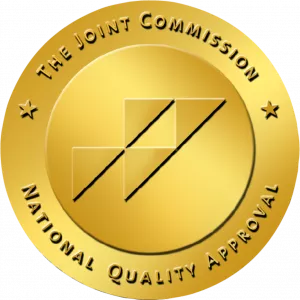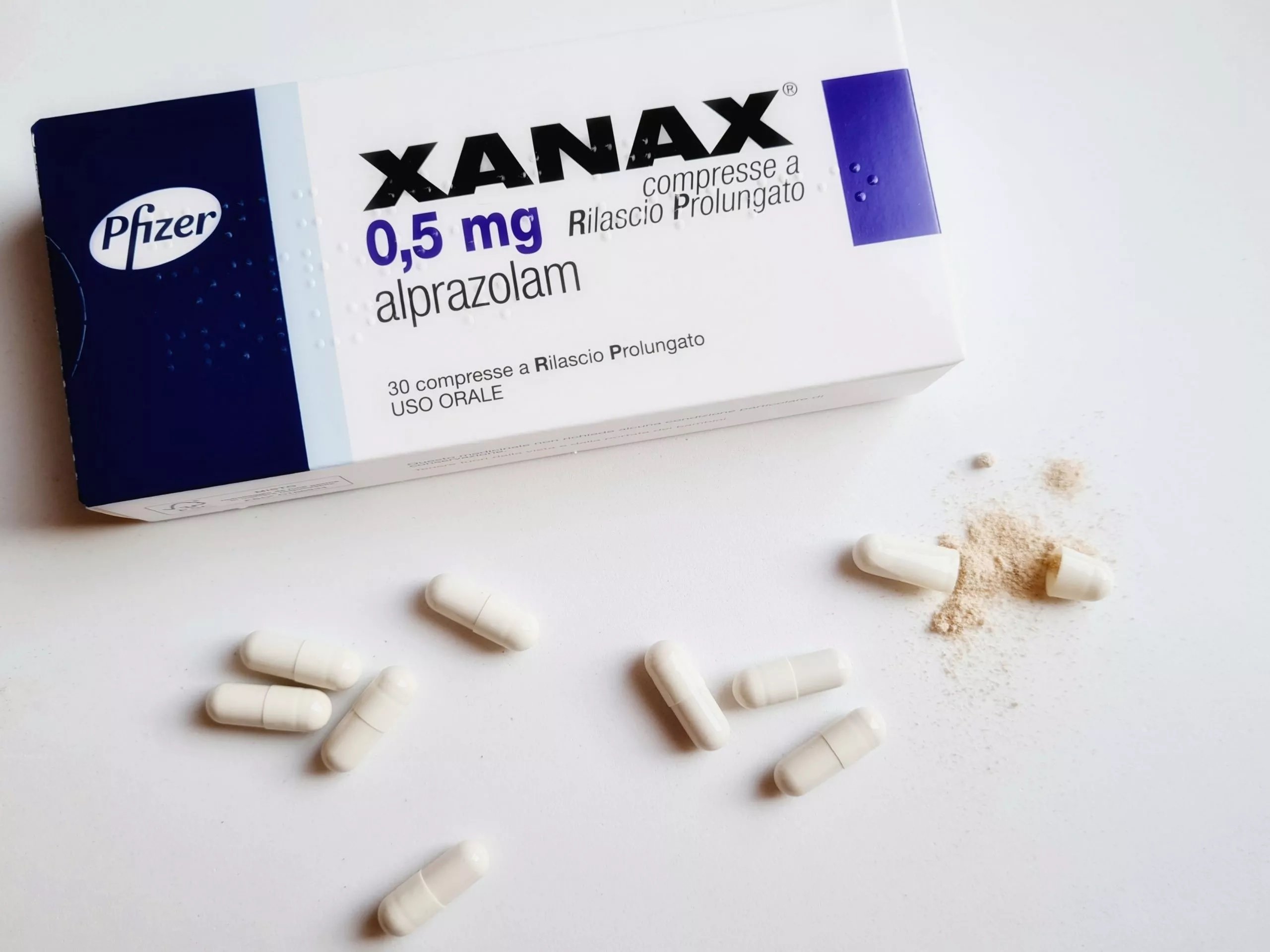Xanax (generically known as alprazolam) is an anti-anxiety medication, part of the benzodiazepine class of medications. It acts as a central nervous system sedative and increases the release of dopamine creating a calming effect in the brain. Xanax addiction influences the effectiveness of GABA in the brain, a brain chemical that slows down brain activity and produces a calm feeling. When the brain becomes dependent on Xanax, it relies on it in order to be able to produce GABA. When the drug leaves the bloodstream, Xanax withdrawal can occur as the brain tries to regain its natural equilibrium.
In this post, Avenues Recovery, a leader in addiction rehabilitation, lists common Xanax withdrawal symptoms and explains how you can ease the Xanax detox process.
What Is Xanax Withdrawal?
Xanax withdrawal refers to physical and psychological symptoms that occur when someone stops taking Xanax after prolonged use.
What Are Xanax Withdrawal Symptoms?
Common symptoms of Xanax withdrawal include uncomfortable physical, psychological, and post-acute effects on the body. Withdrawal can begin within 6–12 hours, peak at 1–4 days, and may last weeks. Withdrawing from Xanax can cause symptoms ranging from mild to severe and can even be fatal. It is important that a professional oversees someone undergoing Xanax withdrawal to ensure that their symptoms are managed, and a relapse prevention plan is in place.

Physical Symptoms of Xanax Withdrawal
Although the exact physical symptoms of Xanax withdrawal will vary from person to person, below are some examples of the common symptoms:
- Tremors
- Muscle spasms
- Headaches
- Sweating
- Racing pulse
- Hyperventilation
- Hand tremors
- Headaches
- Heart palpitations
- Seizures
- Insomnia
Psychological Xanax Withdrawal Symptoms
Withdrawal from Xanax can also lead to psychological symptoms. Receiving professional help is extremely important in helping an individual manage these Xanax withdrawal symptoms. Below are some psychological symptoms:
- Anxiety
- Depression
- Restlessness
- Difficulty concentrating
- Delirium
- Hallucinations
- Feelings of unreality
- Panic attacks
Post-acute/Long-Term Xanax Withdrawal Symptoms
The withdrawal process from Xanax, even if it was only taken for a short while, can be exceedingly difficult. There are risks and long-term side effects associated with Xanax withdrawal. Some of the Xanax post-acute withdrawal symptoms include:
- Relapse
- Depression
- Anxiety
- Bad mood
- Drug cravings
- Lack of interest in one’s environment
- Significant weight loss
- Seizures, which can be severe and life-threatening

The Xanax Withdrawal Timeline
After withdrawing from Xanax, users will begin to experience symptoms of Xanax withdrawal. These symptoms will begin within 24 hours and can last from a few days to months. Approximately 10-25% of users experience Xanax withdrawal symptoms that last longer than 12 months.
The Xanax withdrawal symptoms and timeline differ for every individual. However, the timeline of Xanax withdrawal generally follows these four stages:
- Stage One: Xanax withdrawal symptoms typically set in within 12-24 hours after the last dose was taken. Once the body is detoxed from the substance, symptoms of Xanax withdrawal will begin and are usually the most severe during this stage. During this time patients may experience symptoms of Xanax withdrawal insomnia and anxiety.
- Stage Two: The second stage of Xanax withdrawal will begin 1-4 days after the last dose. The most common symptom during this stage is known as the rebound effect. This occurs when patients experience similar symptoms to how they felt before taking Xanax. Flu-like symptoms are also common during this stage - such as vomiting, nausea, and diarrhea.
- Stage Three: Xanax withdrawal symptoms tend to continue up until day 14. During this stage, the most common symptoms are insomnia and anxiety.
- Stage Four: Stage four of Xanax withdrawal occurs once acute withdrawal symptoms are over. During this stage, patients may experience some remaining mild Xanax withdrawal symptoms. Many individuals can manage these symptoms of Xanax withdrawal while returning to work and resuming their routine lives.

Factors That Affect the Severity of Xanax Withdrawal
The severity and symptoms of stopping Xanax will depend on varied factors and differ among individuals.
Some of the factors that affect withdrawal from Xanax are:
- Duration Xanax was taken
- Dosage
- Misusing the prescription
- Using the drug without a prescription
- Underlying mental health conditions or co-occurring disorder
- Taking/misusing other drugs at the same time
- Mixing Xanax and alcohol
Can You Die From Xanax Withdrawal?
Yes. Unlike many other drugs, withdrawal from Xanax can be fatal and complex. Withdrawal symptoms such as seizures and tremors can be deadly if not treated properly. Patients should take extra caution when quitting Xanax if they have prior diagnoses of serious mental health disorders such as:
- PTSD
- Bipolar disorder
- Panic disorder
- Borderline personality disorder
Symptoms from such disorders can start again and lead to a risk of suicide. If Xanax was taken with other drugs, such as opioids, there may be added complications to the Xanax withdrawal process. Therefore, it is strongly advised to seek expert medical care while experiencing Xanax withdrawal symptoms, such as attending Avenues Recovery’s drug detox center, to ensure that the process happens with minimal risk.
What Helps With Xanax Withdrawal?
Premier rehab facilities like Avenues Recovery offer various treatment programs and coping strategies to help you detox from Xanax safely. Below are some treatment options that can be beneficial for Xanax withdrawal:
Medical Treatment for Withdrawal From Xanax
A medical professional may be able to prescribe medications to assist with the withdrawal process.
Some of the approved medications for Xanax withdrawal symptoms are:
- Long-acting benzodiazepines: These may be prescribed for tapering off instead of taking Xanax. This may help reduce withdrawal symptoms over a longer period and offer a better solution than tapering off Xanax without benzodiazepines.
- Antihypertensives and antiseizure medications: A doctor may prescribe these to help with seizures or anxiety attacks.
Coping Strategies for Xanax Withdrawal
Furthermore, some non-prescription solutions can help one cope with the symptoms of Xanax withdrawal, and can potentially take away or alleviate the symptoms. Below are some options:
- Herbal sleep aids
- Meditation
- Mindfulness practice
- Exercise
- Melatonin
Long-Term Treatment for Xanax Withdrawal
It is a challenging process to quit Xanax. However, if done under expert supervision, long-term abstinence is achievable. The best results are reported when a medical plan is combined with psychological support. Therapy is often helpful for those in recovery and includes coping tools, stress management, and relapse prevention tools. Detox centers that include methods of medical management, therapy, and holistic methods can help ease the recovery journey. Additionally, one can choose inpatient rehab or outpatient rehab options based on their symptom severity and overall situation.

Can You Quit Xanax Cold Turkey?
Stopping Xanax cold turkey will cause more intense withdrawal symptoms and is not recommended by doctors. Instead, a doctor will create a taper schedule to slowly lower the dose of Xanax until it is completely detoxed from the body. Detoxing from Xanax slowly, steadily, and with medical attention will prevent any severe or potentially deadly reaction from occurring.
Xanax Withdrawal Treatment at Avenues Recovery
Research has proven that after tapering off Xanax, it’s possible to lead a successful life and remain abstinent. Due to the unpleasant symptoms, Xanax withdrawal is difficult. Nevertheless, with the right support and solutions, recovery from Xanax withdrawal is possible. At Avenues Recovery, we offer a variety of treatment programs and resources to help you. Our experienced professionals understand the difficult Xanax withdrawal symptoms and are ready to guide you toward a promising sober life. Reach out to us today and begin your journey to recovery!




